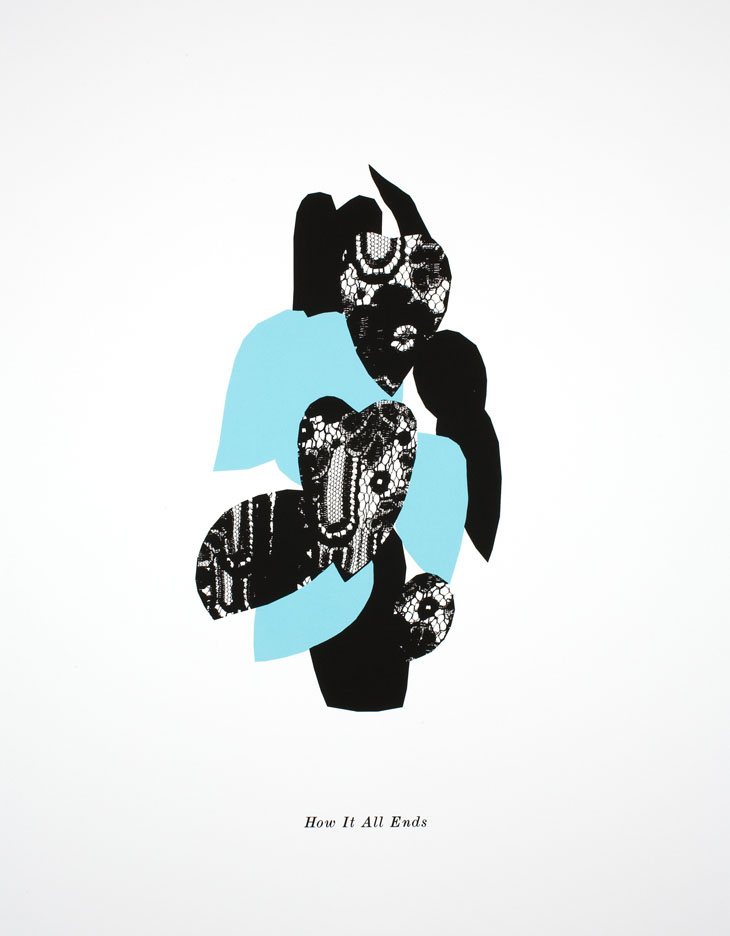
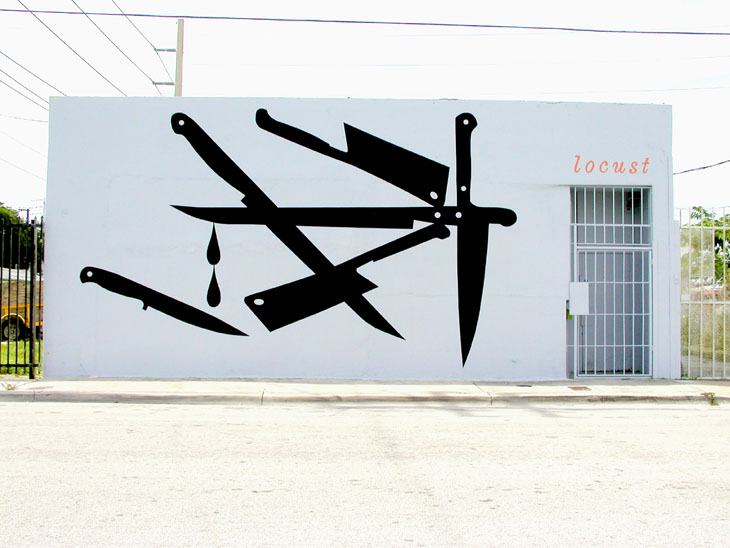
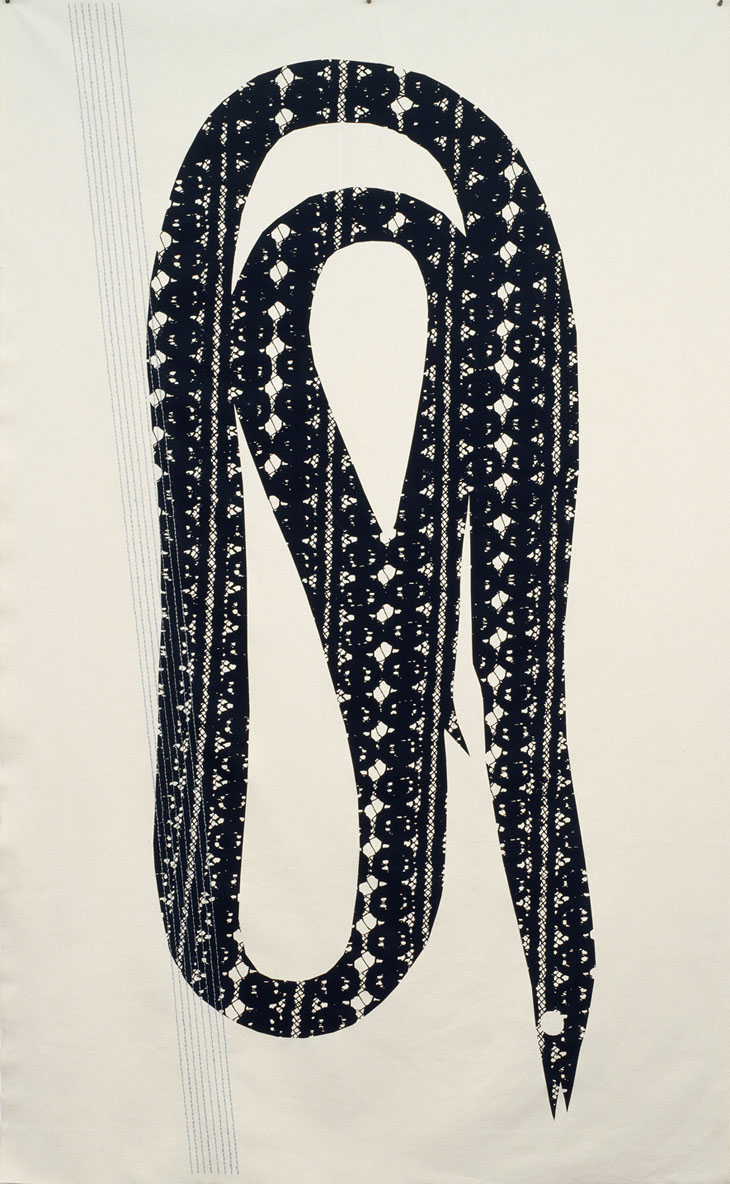
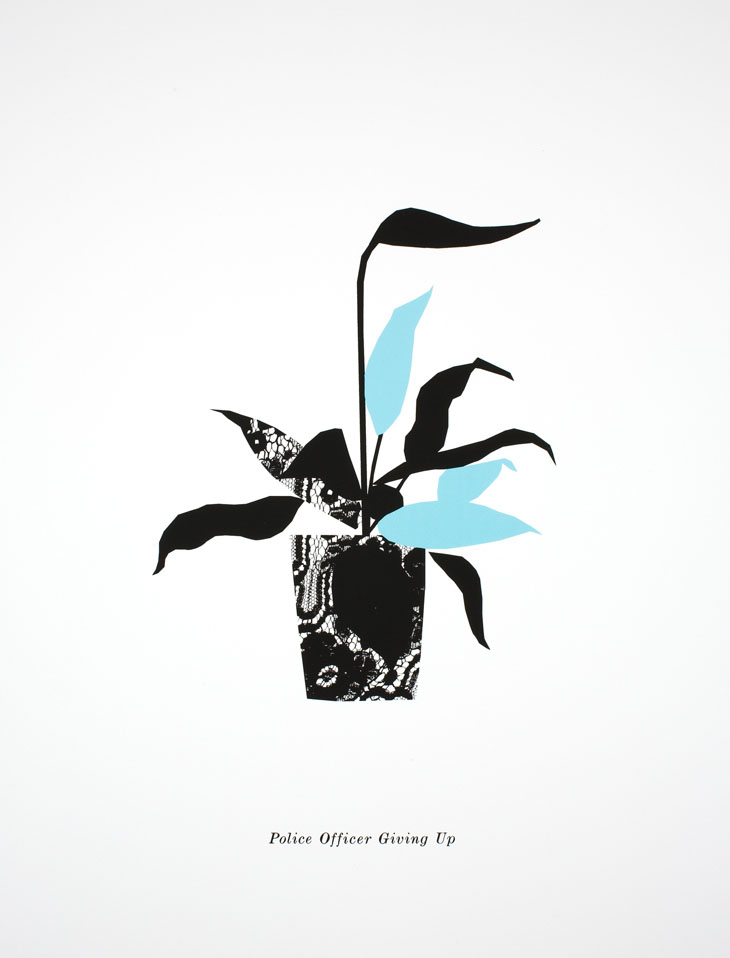
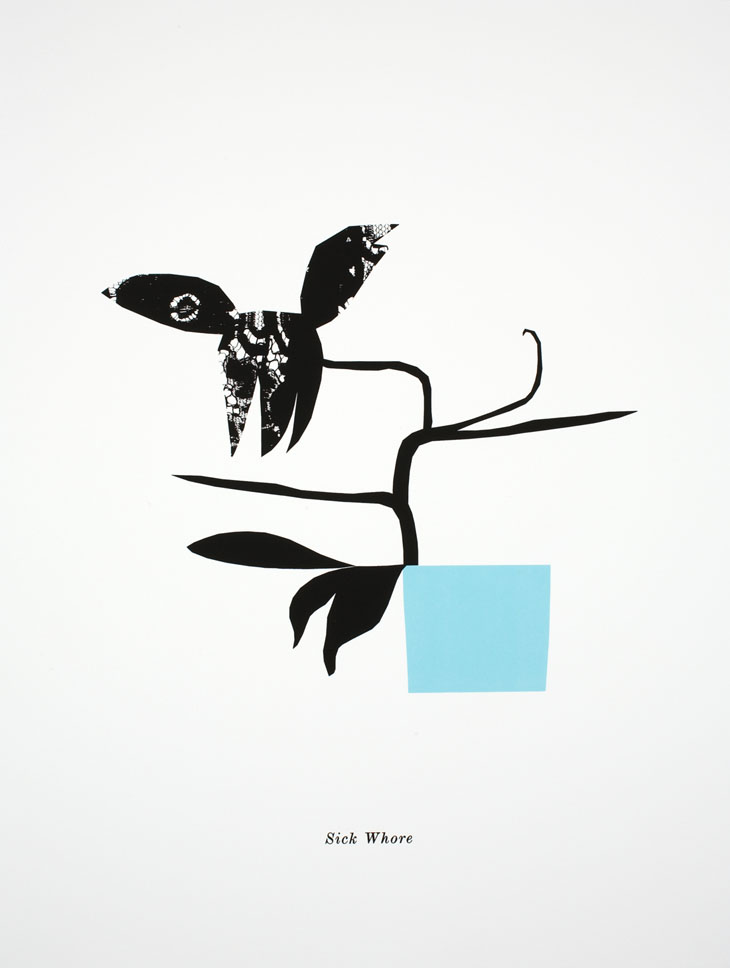
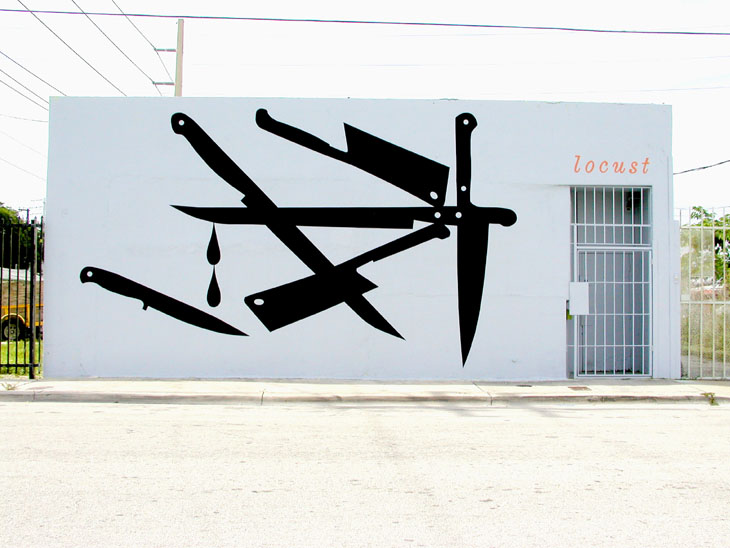
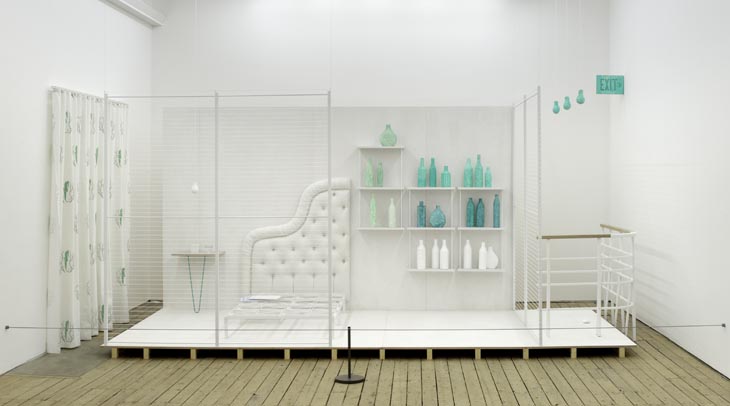
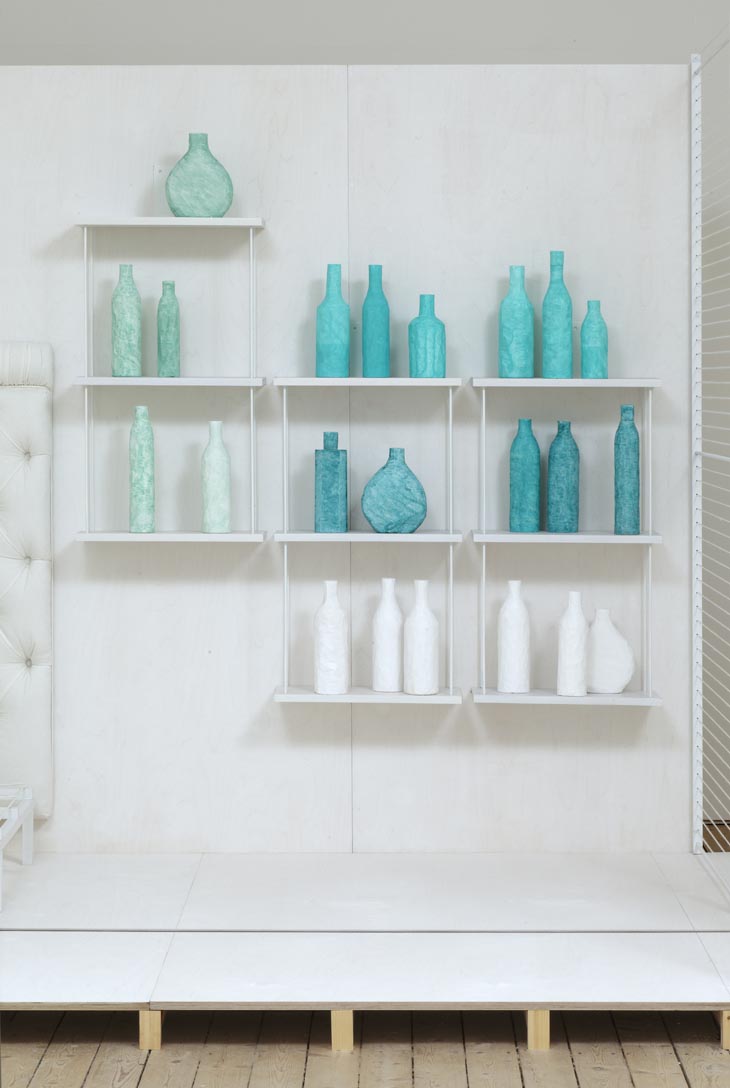
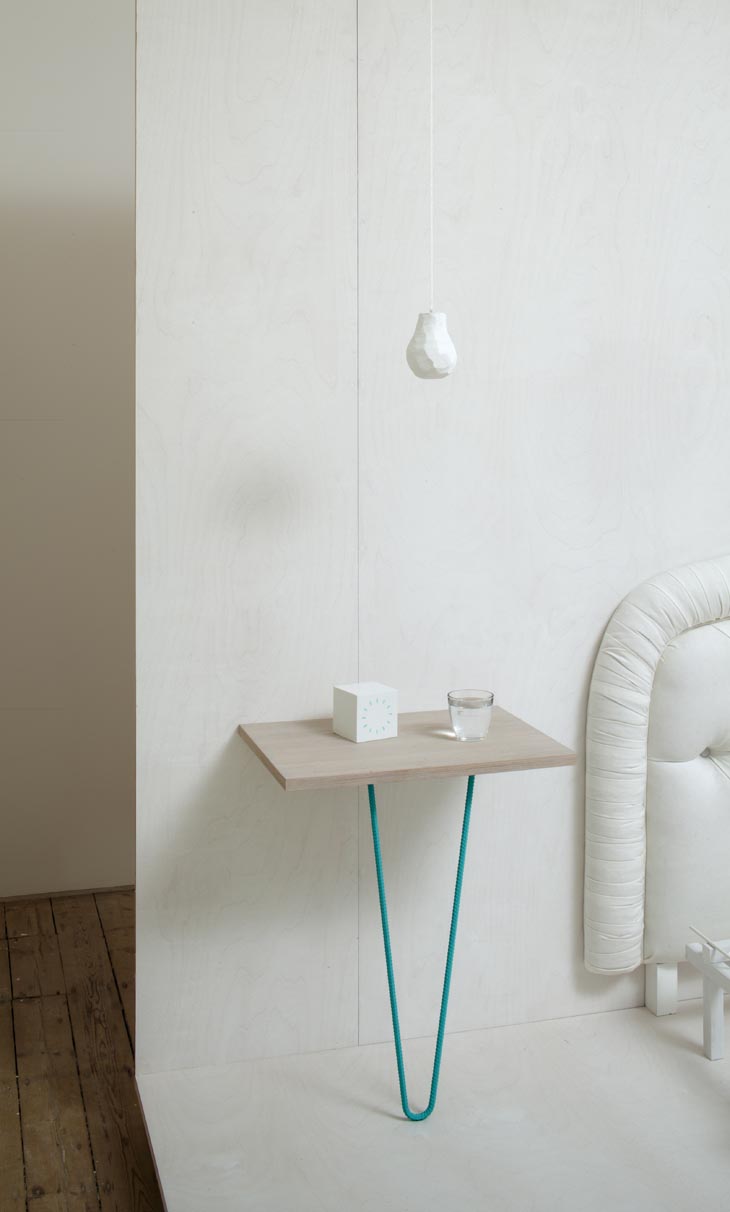
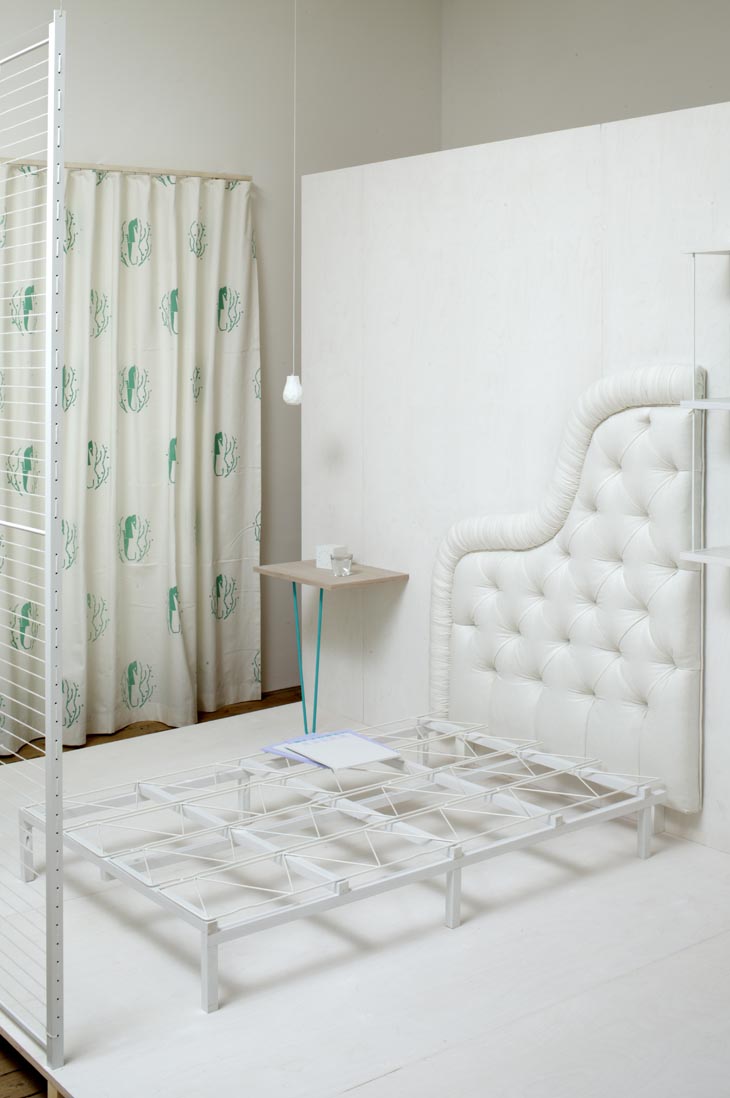
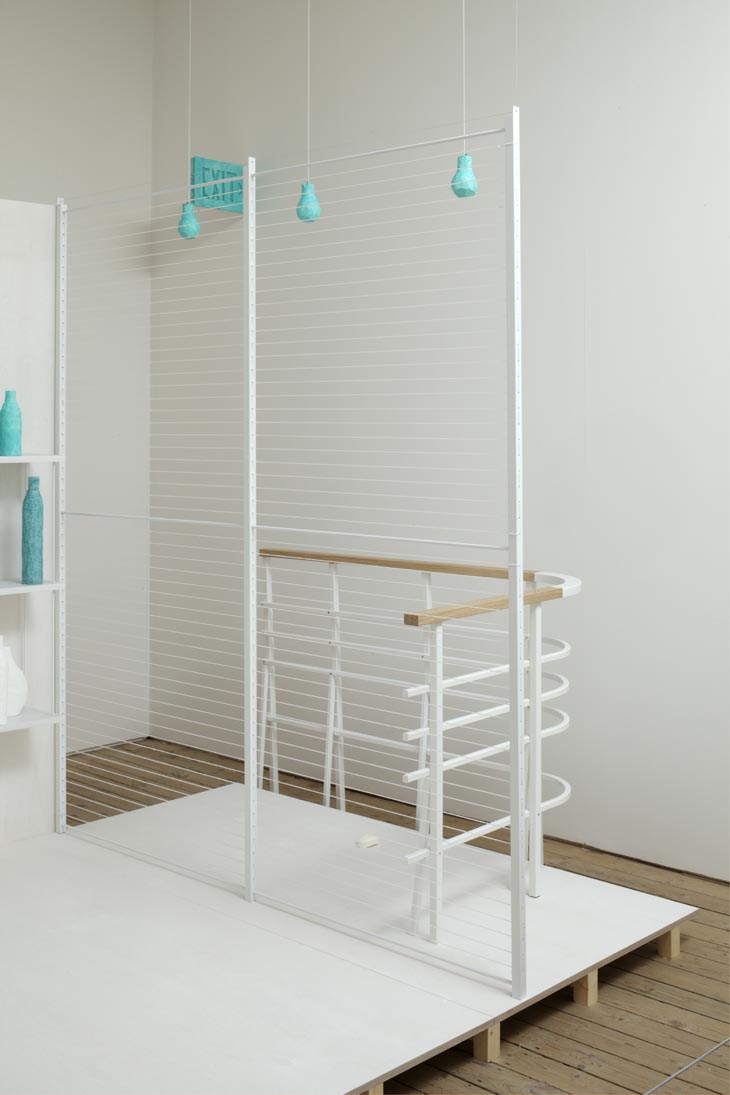
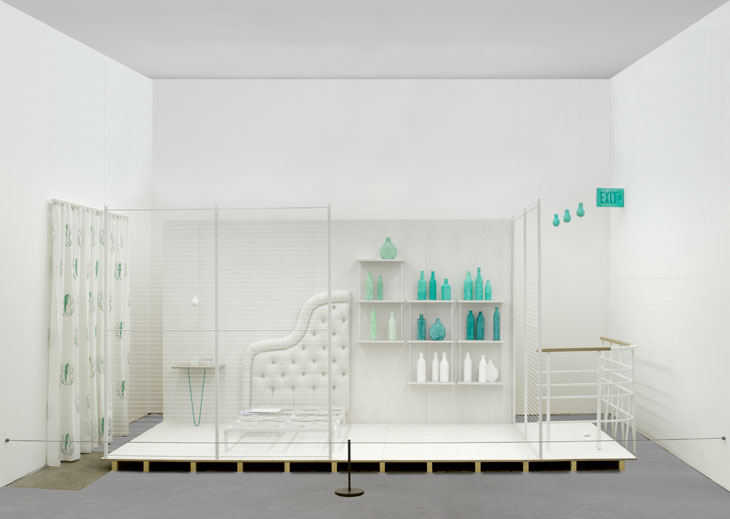
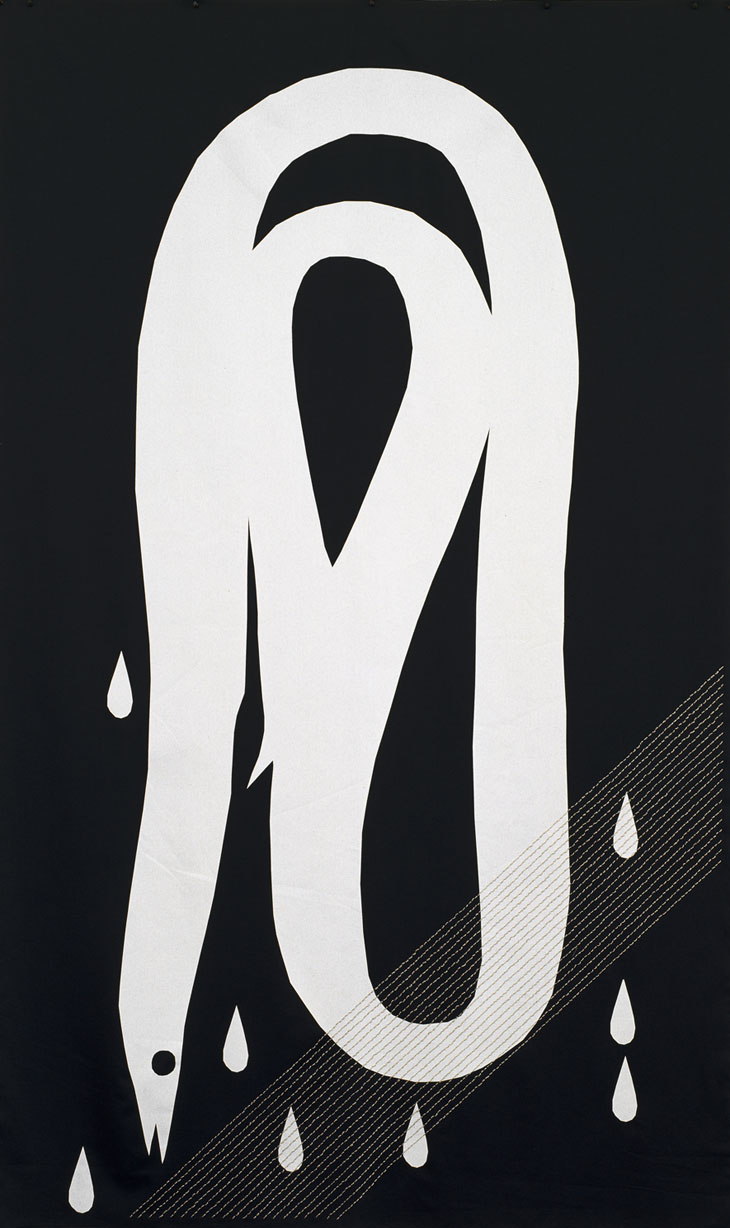
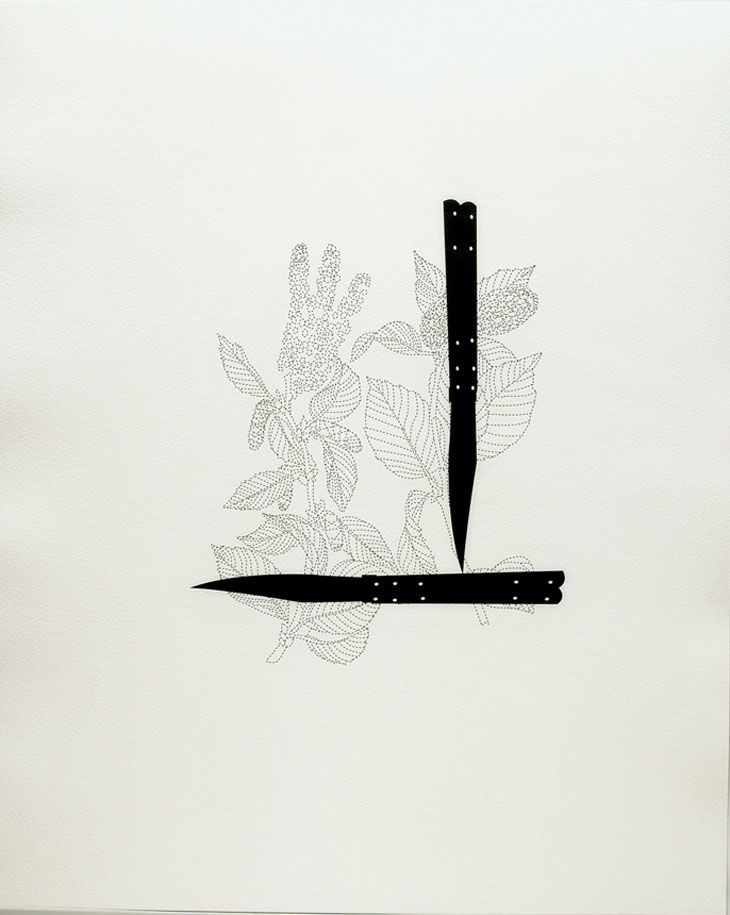
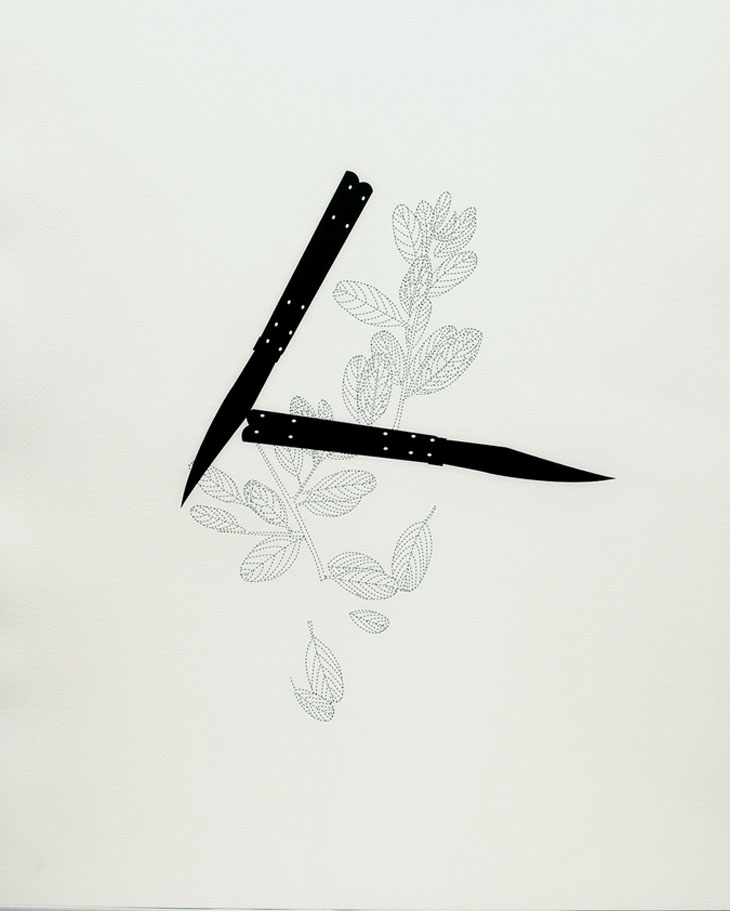
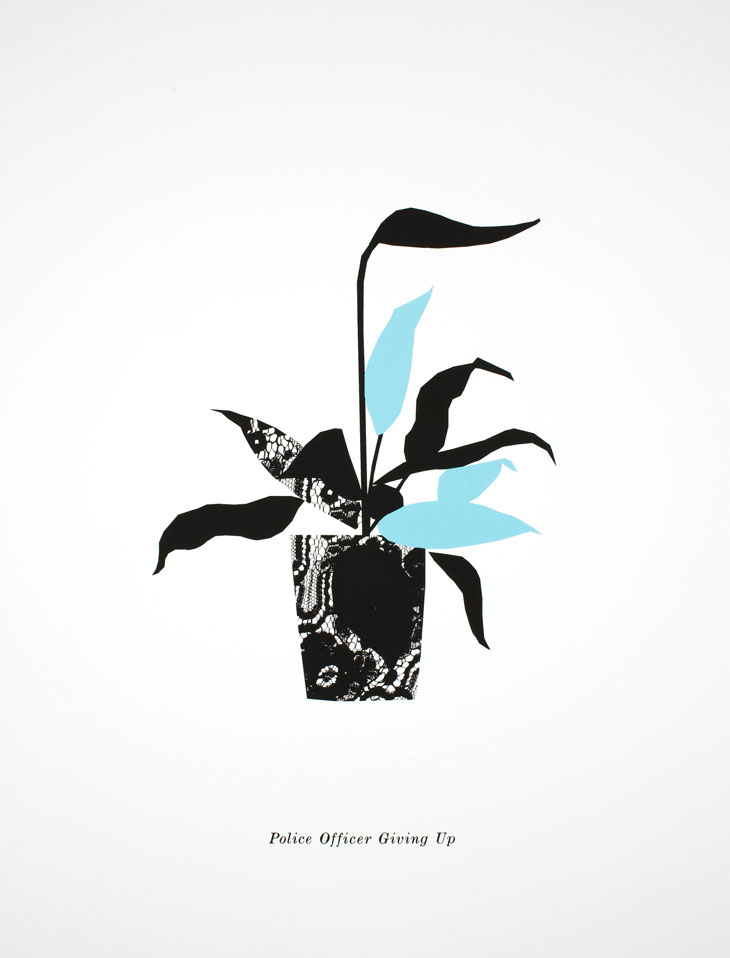
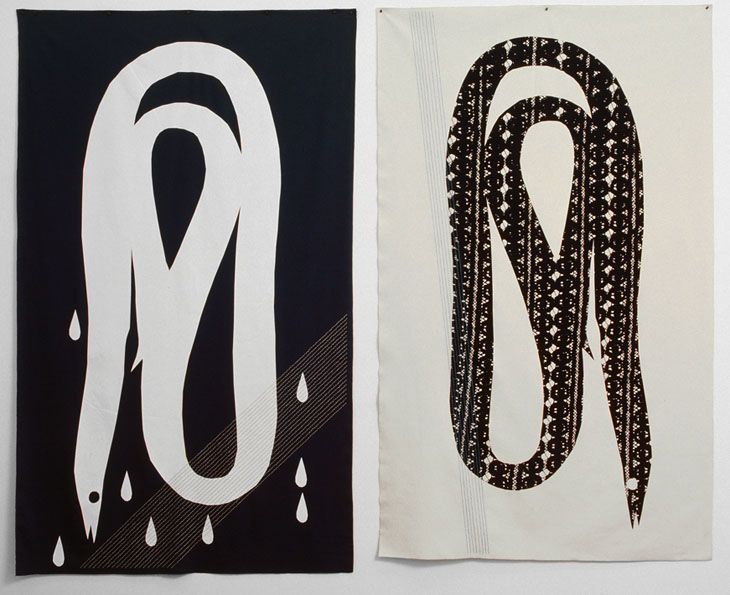
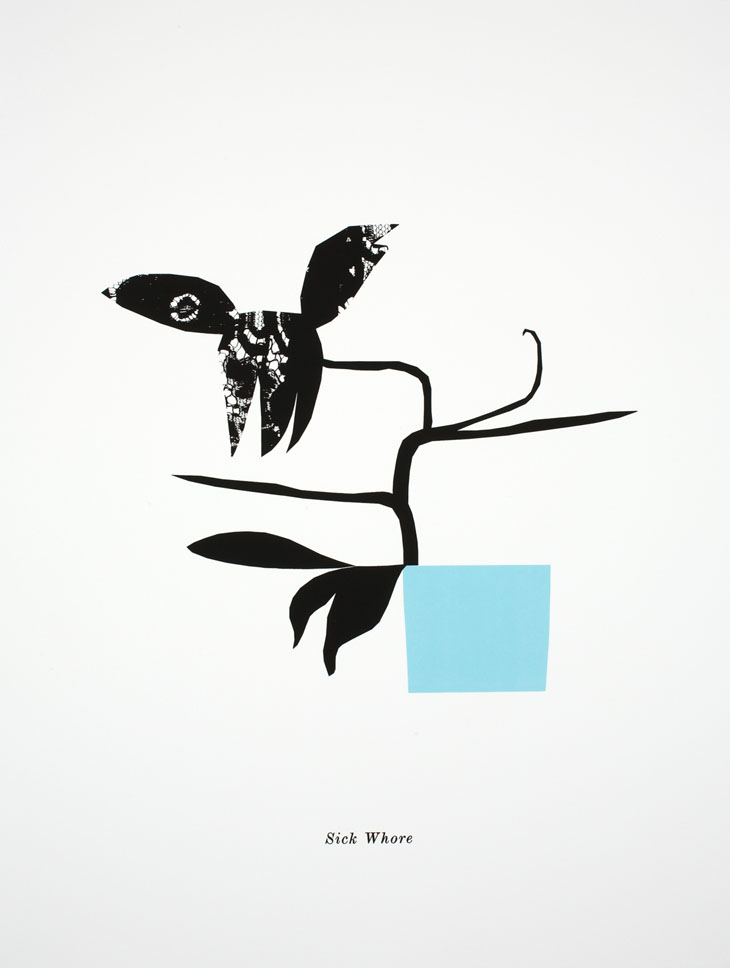
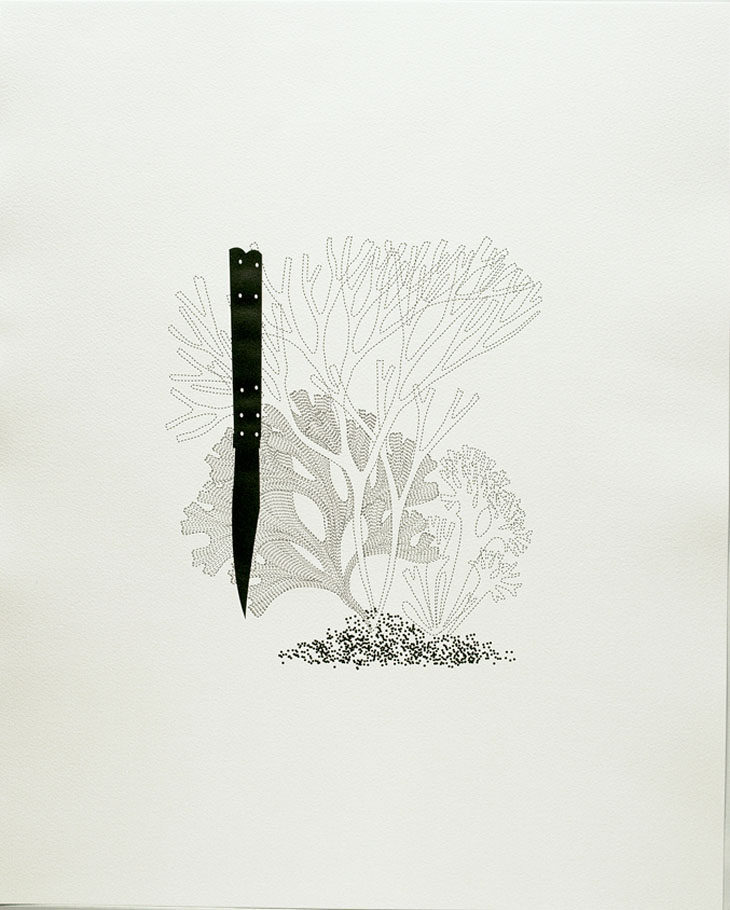
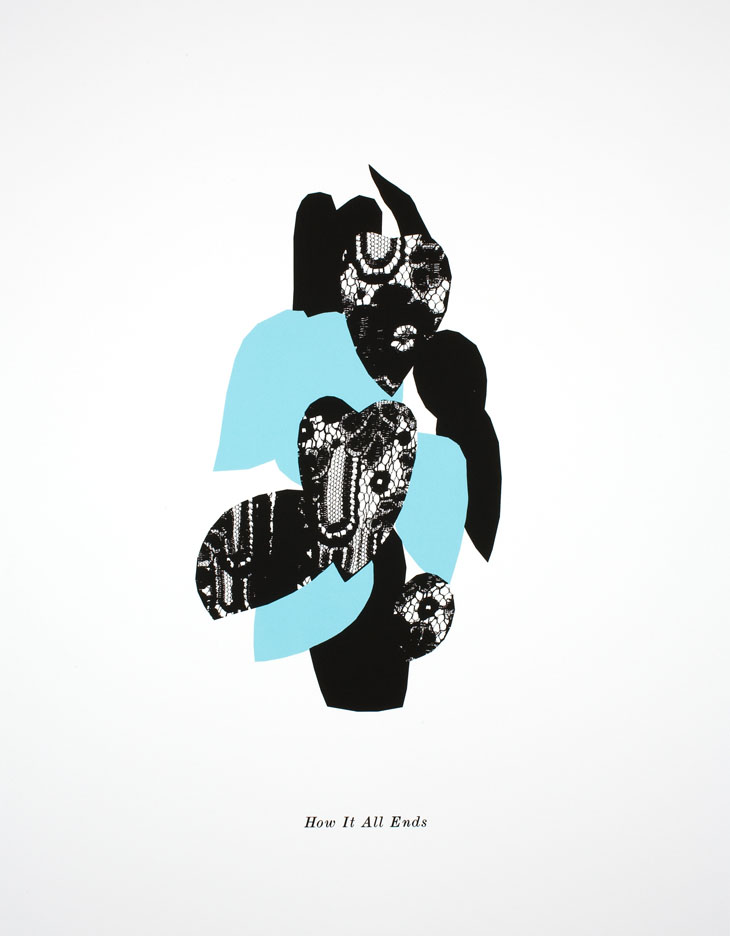
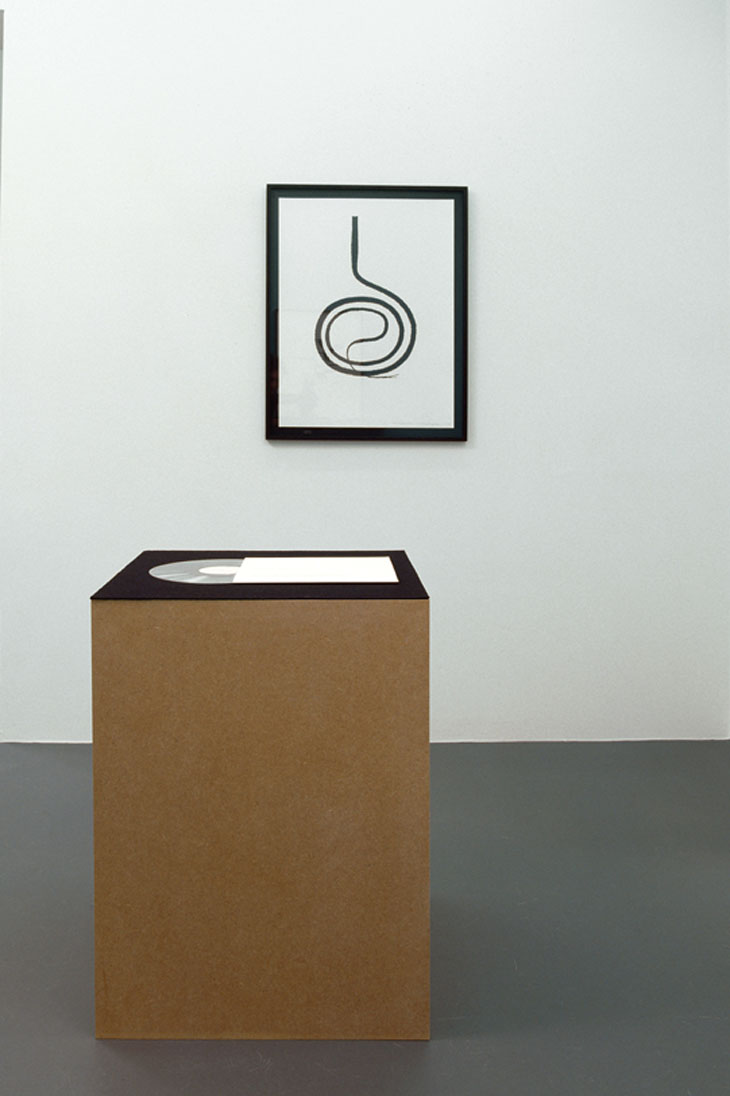
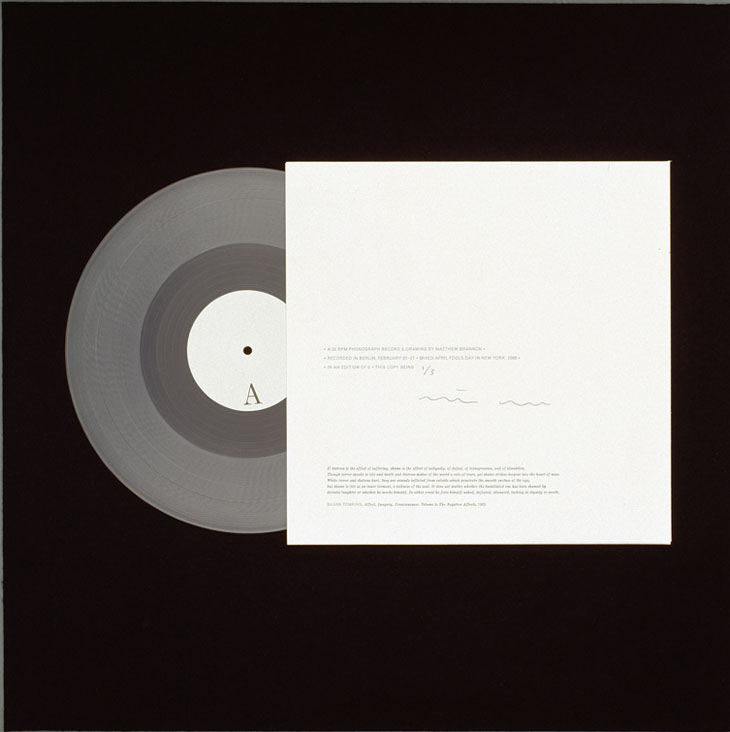
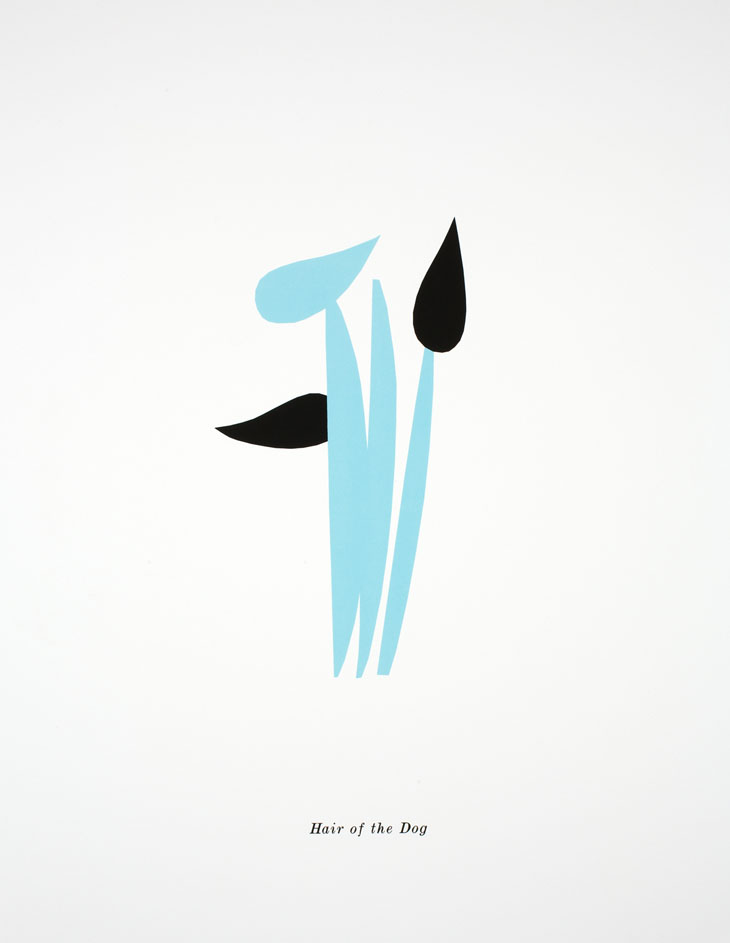
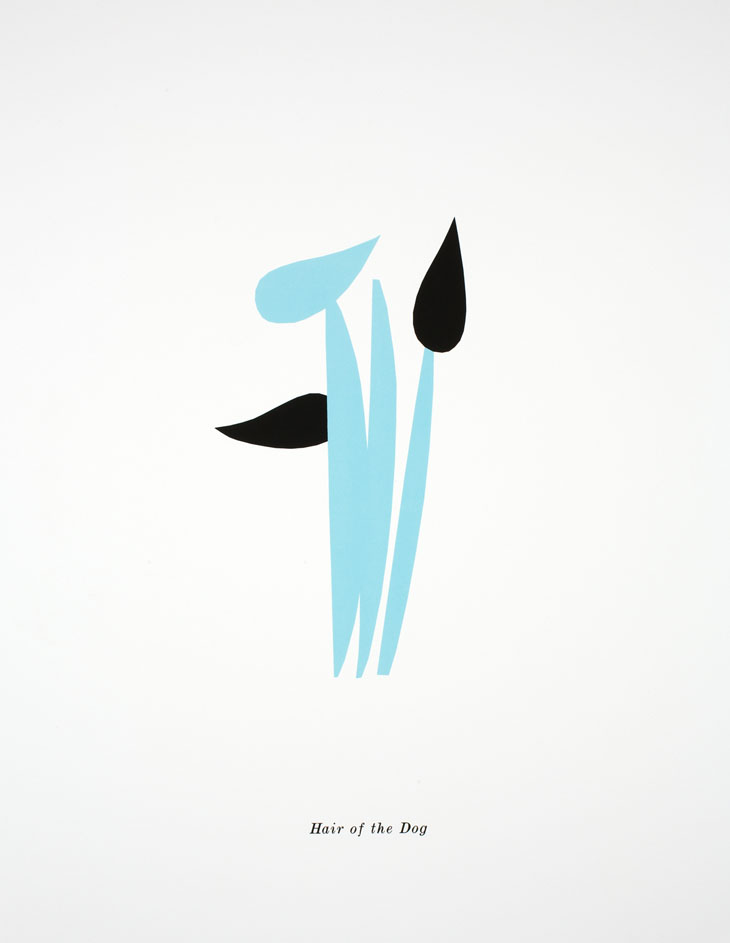
Matthew Brannon
In People Who Divide People, Matthew Brannon adapts his eel motif as a logo of power and class divide. The image itself contains multiple symbolism: as loathsome viper, lowly animal, and revolutionary icon of early America. Rendered in black and white, the delicate pattern is reminiscent of both lace and tire tracks. Humorously recalling the colonial motto “Don’t Tread On Me”, Brannon’s snake supplants ideas of freedom liberation as an elitist decal of ‘good taste’.
Matthew Brannon’s Switching Positions is executed as a wall mural. Showing an entanglement of knives, Brannon conceives not a logo of violence, but apathy. Rendered in black and dripping ‘blood’, Brannon’s blades are diminished to the international language of pictograph signposting, exuding an outline of ‘idea’ rather than a portent of immediate threat. Through this reduction, Brannon presents content as void: his weapons are represented by a blank vacancy, precariously balanced in harmonious composition. Emblazoned in grand scale, Switching Positions presents an unnerving propaganda of disconsolation and hopelessness. The title of Matthew Brannon’s sculpture Nevertheless (2010) is an appropriately oblique ‘giveaway’ from an artist known for the subtlety and humour of his language, objects and prints: “Nevertheless,†he points out, “is an adverb comprised of three words: never - the - less. It became my stance against the panic that ensued from the economic collapse. An attempt to answer the question: what can we make when we shouldn’t be making anything?â€Brannon’s answer to the question is to create shop window-like displays and make-believe theatrical sets. Nevertheless was made on the occasion of Brannon’s first show in London in 2009, and it was the perfect departure from other work being made at the time around urban malaise. Brannon, based in New York, dedicated the London show to the idea of the transatlantic sea voyage.
“As I was working I was rereading Evelyn Waugh’s short autobiographical book The Ordeal of Gilbert Pinfold, viewing the cruise episode of his televised Brideshead Revisited, and digesting the ship passage in Vladimir Nabokov’s Ada. There’s much to be said about such close quarters. About being in between lands and lost at sea.â€
What Brannon has made is a sculpture of an installation, like a set for an untold story, in which seduction and frustration are masterfully ever unfolding. The scene’s suggestive props (water, curtains, handrails, dirty magazines under the mattress) contrast with an exit sign and rope cordoning off the piece, preventing anyone from entering the installation, and leaving the narrative up to the viewer.
“It’s not interactive but you can imagine it being interacted with. I told everyone it was the set of a play. Of a play about a murder on a ship. It’s true I did write it, but that’s another story. What you’re shown here is just the set. I’m allowing you to put the pieces together yourself. To do what you would with it.†Taking emotional vulnerability and solecism as a starting point for investigation, Matthew Brannon often situates his work around themes of self-destructive behaviours that outwardly reflect inner dysfunction, what he describes as “personal pathologies”. Other People’s Money extols the complications of careerism; the image of a limpid dripping/bleeding eel is both trophy and pitiful personification. Brannon describes the grey area of morality in the stark contrast of black and white, cut through by a tread patterned diagonal stripe suggesting a ‘hit and run’ hierarchy of ethics. Utilising the aesthetics of graphic art, Matthew Brannon’s work explores the gulf between social ideals and personal crisis. Using screen printing as form of analogue reproduction, Brannon’s images carry both the suggestion of mass replication and aura of original artworks. Directly challenging the void between language and actuality, Brannon often combines text and image to illustrate the potential for dysfunction. In Police Officer Giving Up, Brannon juxtaposes a neutral symbol of a houseplant with a statement of desperation. Exuding the inadequate sentiment of greeting cards, Brannon offers decoration as a feeble mask for emotional depletion. Matthew Brannon’s prints convey a poetic distillation. Conjuring a complete image from the most meagre information, the ‘messaging’ of Brannon’s images is transferred through their subtlety of form. Situated between luxurious refinement and divested replication, Brannon adopts the associations of design to comment on psychology as by-product of consumer environment. In Sick Whore, Brannon underscores a spindly plant with an abject description or insult. Embossed with the finality of an epitaph, Brannon sums up a totality of a frail, abused, and embarrassing existence. In Matthew Brannon’s How It All Ends he creates an ironic game of semiotics, using an abstracted plant as a visual representation of the accompanied text. Reworking a subject associated with art historical religious paintings, he doesn’t present a fiery Armageddon or cherubic heaven, but rather a bland composition reminiscent of wall paper swatches or gift shop stamps. The image is compelling through its crafted elegance, creating a blithe meditative focus. In confronting the spiritual, Brannon offers a bereft philosophy, conceiving the human condition with disappointment and chagrin. Matthew Brannon’s HYENA is presented as a vinyl LP atop a plinth. Illustrating the effectiveness of packaging over content, the object exudes a precious quality as product and collectable. The recording itself, however is much more sinister. Featuring a caged hyena at a Berlin zoo, the soundtrack captures a disturbing symphony of clattering metal, audience rumblings, and breaking bones, beneath an aria of the animal’s frantic bark-laughter. In this discrepancy between outward appearance and contained turmoil, Brannon creates a haunting analogy for tenuity of human experience. Matthew Brannon’s work investigates media imagery as a cultural interface, exploring the gap between expectation and inadequacy. Using topical problems such as substance abuse, body image, and class divide as metaphors for social and psychological fractioning, Brannon pits visual ‘ideals’ versus internalised corruption to create conceptual instances of breakdown. In Hair of the Dog, Brannon’s clip art-style motif reduces the idea of individuality to an infinitely replicable generic. Coupled with a cynical script typeset in ornamental font his blossoms become emblematic of disease, addiction, and futility.























